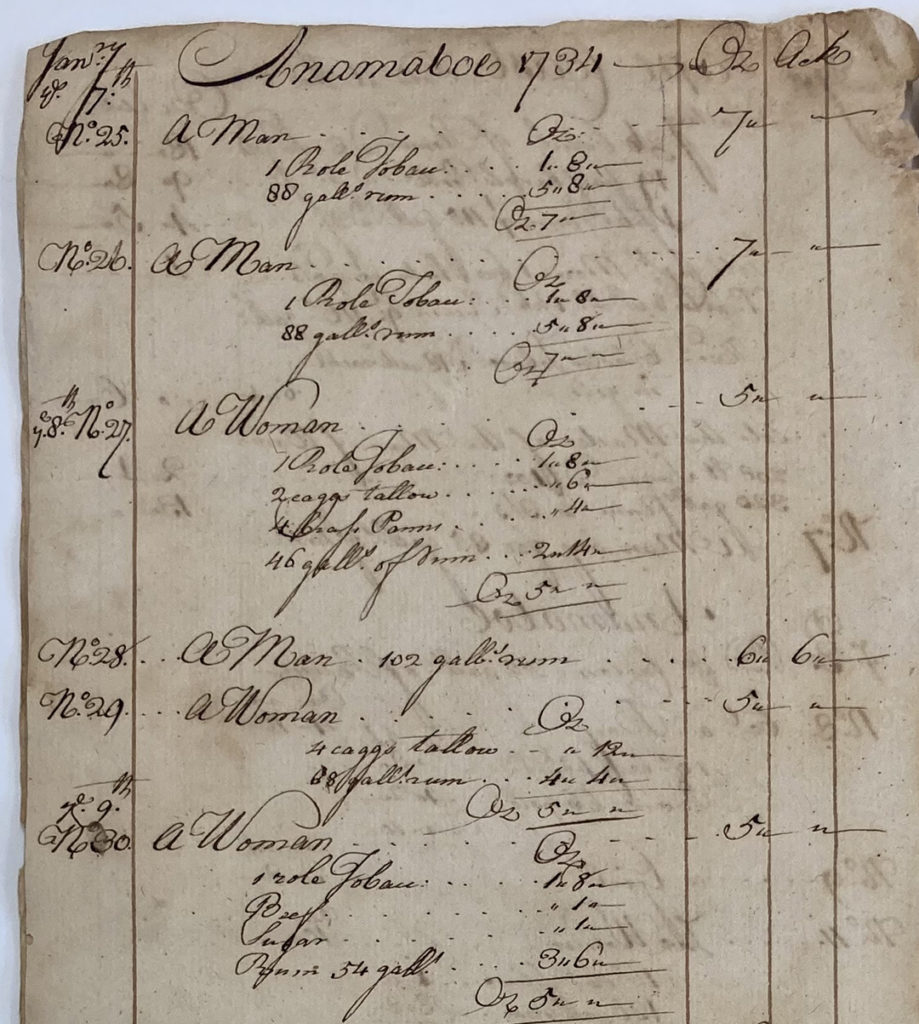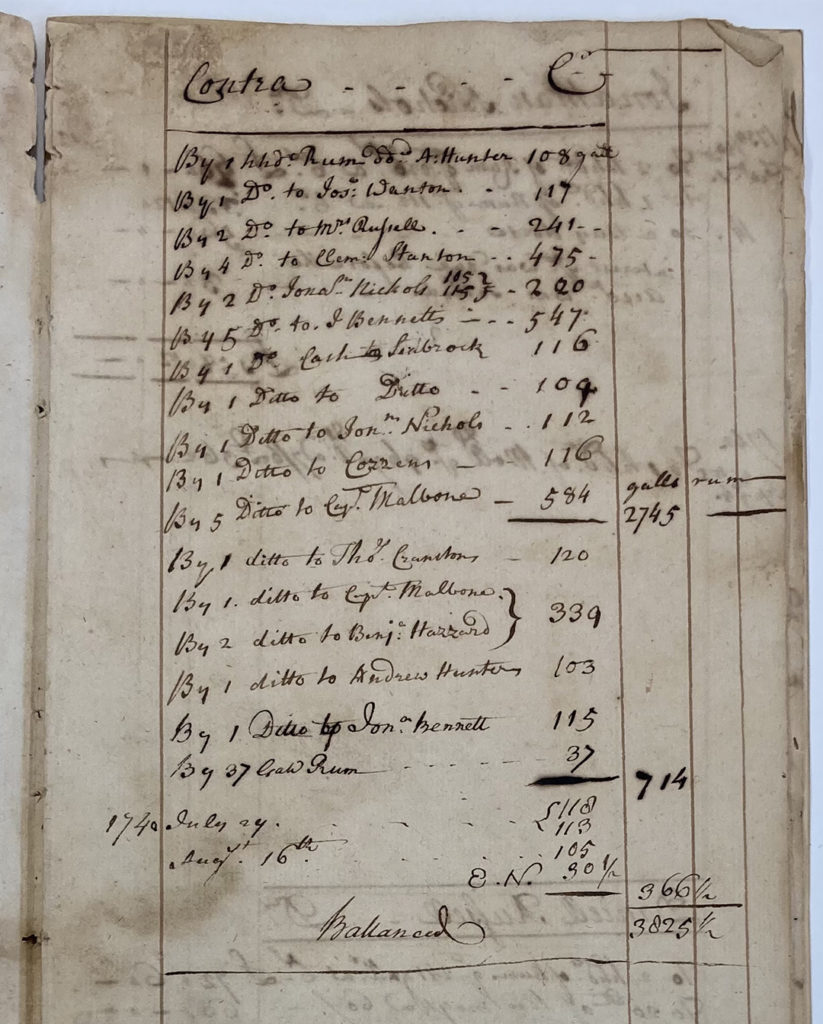Alexander Bice, MA graduate, Northeastern University, is one of the 2021 Buchanan Burnham Fellows working on capturing data from the NHS archives on Black and Indigenous people of color in colonial Newport, Rhode Island. The following post relates to the logbook of the Snow Greyhound, a ship that was engaged in the transport of enslaved Africans from the ‘Gold Coast’ of Africa.
As a summer fellow with the Newport Historical Society, I am working to uncover the names and histories of Rhode Island’s 18th century enslaved, indentured, and manumitted population. While some documents ask us to imagine the lives of enslaved people and their struggles, others prompt a more fundamental question: How should we think about and work with documents that solely emphasize the mistreatment, exploitation, and dehumanization that enslaved people faced? In our own attempts to deal with the history of slavery in Rhode Island, how can we best use these documents?
Each voyage that carried enslaved people to North America, Europe, or the Caribbean produced documentation in the form of letters, paystubs, and account books. As they went, ship captains kept highly detailed records of the enslaved people they purchased and the costs associated with each transaction. The account log of the Snow Greyhound, which I have been working with over the past few weeks, encapsulates many of these aspects of enslavement. The Greyhound undertook several voyages to modern-day Ghana, then known as the Gold Coast. The Captain of the ship frequented multiple ports that were central to the trade in enslaved people, including Cape Coast Castle and Anamaboe (now known as Anomabu).
The most notable feature of these documents is their complete dehumanization of the human beings they traded in. None of the enslaved people purchased by the Captain of the Greyhound are named; instead, they are represented as numbers in an inventory. The primary focus of the account book was value: the value of the enslaved people and the goods exchanged in their purchase. The excerpt below exemplifies many of the pages in the account book, which logged the enslaved people that were purchased. The numbers on the left-hand columns of the book include the date of the month the transactions occurred, and then the total number of enslaved people purchased by the Greyhound’s captain during the voyage. The middle column includes the goods exchanged for enslaved people, and highlights goods like rum or textiles that were common in the slave trade. The final column on the right-hand side lists the combined value of the goods exchanged.

The Greyhound log book highlights many aspects of enslavement, from the dehumanization of enslaved people to the profits that stood to be made by those who associated with these voyages. NHS Vol.1342, page 10.
Because of the nature of documents like this ship log, using these records to elucidate the lives of people taken from Africa is very challenging. The log leaves out much of what historians seek when trying to humanize enslaved people for contemporary audiences. Instead, it emphasizes the violence and exploitation that undergirded slavery. On top of that, it highlights the goods (which enslaved people often played a part in making) that were then used to continue the trade and grow the wealth of those who funded these voyages. These documents often advance and cement the presence of enslavers in the archive, and perpetuate the obscurity of those who were enslaved. The page below highlights the massive exchanges in value that occurred, and how men with wealth funded these voyages through shipments of rum on top of other goods.

A list that emphasizes the thousands of gallons of rum that were used as trade goods once the Greyhound reached Anamaboe. NHS Vol.1342, page 33.
Through recording individuals as mere numbers, the log of the Greyhound negates the agency of those individuals that were taken from their homeland and brought to the Americas; the record distills people, and all their complexities, into a column of numbers. On the other hand, those who stood to benefit financially have their actions recorded in great detail.
In thinking about how we present this information in our forthcoming database, we have sought to emphasize the individuality of all the enslaved people documented in these records. Although we do not know their names, we account for each person who was forced onto one of these ships in the hopes that, through researching additional materials in our archive and other repositories, we will be able to create a more complete picture of the lives and experiences of these individuals.